3‑D Printing Fossil Fragments to Reconstruct Dragon Physiology
Using advanced 3-D printing, you can transform fossil fragments into detailed dragon skeletons, helping you explore their anatomy and movement. By capturing precise digital scans, you can create accurate replicas of bones, scales, and claws, even filling missing parts with artistic interpretation. This approach bridges science and mythology, offering insights into prehistoric ecosystems and biomechanics. If you keep exploring, you’ll discover how these models deepen our understanding of extinct creatures and their environments.
Key Takeaways3D printing enables precise, tangible replicas of fossil fragments for detailed analysis of dragon anatomy.Digital modeling of fossil features reveals muscle attachment sites, informing movement and biomechanics reconstructions.Incorporating anatomical insights from fossil analysis helps create accurate models of dragon physiology.Material innovations allow testing of structural strength and flexibility in reconstructed dragon skeletons.Combining fossil data with artistic interpretation bridges myth and science, enhancing understanding of dragon biomechanics.The Role of 3-D Printing in Paleontology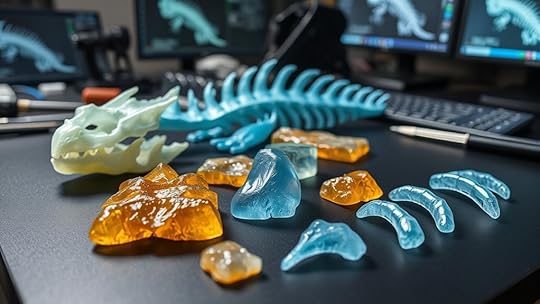
3-D printing has revolutionized paleontology by allowing researchers to create precise, tangible replicas of fossil fragments. This technology enables detailed examination without risking damage to original specimens. With insights from genetic engineering, scientists can better understand ancient DNA and reconstruct extinct species’ features. Additionally, 3-D printed fossils often carry mythical symbolism, connecting science with cultural stories about legendary creatures. These replicas help bridge the gap between myth and science, sparking public interest and inspiring new hypotheses. By providing accurate models, 3-D printing accelerates research, education, and conservation efforts. It allows for collaborative analysis across institutions and supports the development of innovative reconstructions. Overall, this technology transforms fossil study into a more accessible, detailed, and interdisciplinary pursuit.
Discovering and Analyzing Dragon Fossil Fragments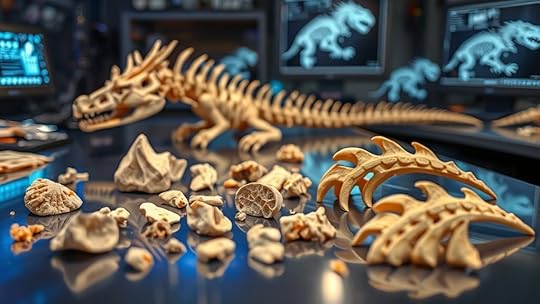
The use of advanced imaging and 3-D printing techniques has opened new avenues for discovering and analyzing fossil fragments believed to belong to ancient dragons. By examining fossil preservation, you can identify key features linked to dragon symbolism, such as scales or claws, enhancing your understanding of their physiology. These methods help distinguish genuine fossils from artifacts and reveal subtle details invisible to the naked eye. Visualizing fragments through digital models allows for precise analysis and better interpretation of fragmented remains. This process accelerates discoveries and deepens insights into dragon anatomy, bridging myth and science.
Discovery MethodsAnalytical FocusImaging scansFossil preservation quality3-D modelingIdentifying symbolic featuresField excavationsGeographic distribution of fragmentsComparative anatomyUnderstanding physiological traitsTechniques for Recreating Dragon Bones and Structures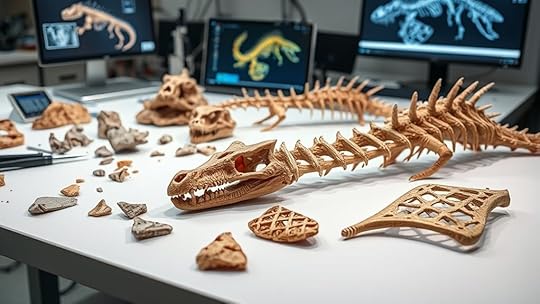
Recreating dragon bones and structures involves a combination of digital modeling, material fabrication, and assembly techniques that bring fragmented fossils back to life. You start with detailed scans of fossil fragments, then use digital tools to reconstruct missing parts through artistic interpretation, guaranteeing anatomical accuracy. Material fabrication methods, such as 3D printing with durable resins, replicate the bone’s texture and strength. While genetic engineering isn’t directly involved in physical reconstruction, it offers insights into potential biological features, guiding accurate modeling. You can also incorporate creative elements to emphasize certain traits, blending science with artistic interpretation. Finally, precise assembly ensures the structures are stable and true to the imagined physiology, providing a realistic foundation for further study or display.
Challenges in Replicating Mythical Creature Anatomy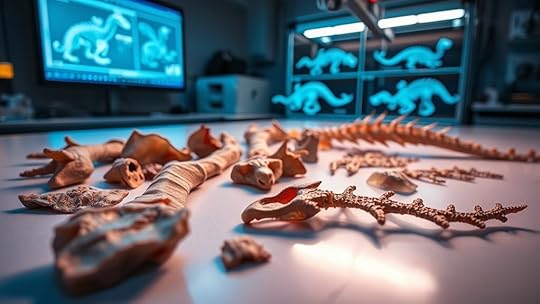
Creating accurate replicas of mythical creature anatomy presents unique challenges because these beings often lack real-world counterparts or complete fossil records. Achieving mythical realism requires blending scientific data with imaginative interpretation, making it difficult to guarantee that models look believable while remaining true to legend. You must navigate gaps in fossil evidence and fill in missing details without compromising fantasy accuracy. This balancing act can lead to inaccuracies that undermine the creature’s authenticity or mystical qualities. Additionally, aligning anatomical features with known biology while respecting mythological traits demands careful judgment. As a result, reproducing these complex beings tests both your technical skill and your ability to integrate scientific principles with creative storytelling, highlighting the intricate challenge of capturing the essence of mythical realism in physical form.
Insights Gained From 3-D Printed Dragon Models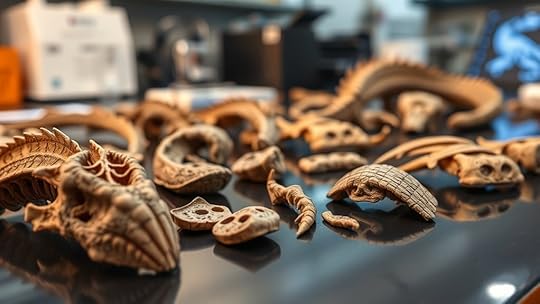
3-D printed dragon models reveal detailed insights into their structure, allowing you to analyze how different parts fit and support each other. This helps you understand their physiology more accurately than ever before. By examining these models, you gain a clearer picture of how these mythical creatures might have moved and lived.
Structural Analysis BenefitsHow do 3-D printed dragon models enhance structural analysis? They allow you to study complex bone arrangements and joint mechanics with unprecedented detail. By using digital sculpting, you can refine models to accurately reflect fossil features, ensuring precise reconstructions. Material innovations further enable you to test different strengths and flexibilities, revealing how bones and tissues might have supported the creature’s movements. These models make it easier to identify structural weaknesses or adaptations, providing insight into biomechanics and load distribution. You can manipulate physical copies to observe how different forces impact the anatomy, which isn’t possible through digital scans alone. Overall, 3-D printing transforms theoretical data into tangible evidence, deepening your understanding of the dragon’s structural integrity and physical capabilities.
Enhanced Physiological UnderstandingBy examining physical dragon models produced through 3-D printing, you gain a deeper understanding of their physiological features that digital scans alone can’t provide. Handling these models reveals details about biological adaptations, such as muscle placement, joint flexibility, and respiratory structures. This hands-on approach allows you to visualize how different features supported their survival strategies and behaviors. Additionally, exploring these models helps clarify evolutionary pathways, showing how specific traits may have developed over time. You can assess how anatomical modifications enhanced functionality or adaptation to environments. This enhanced physiological understanding bridges the gap between fossils and living creatures, offering insights into the complex biological processes that shaped these legendary beings. Ultimately, 3-D printed models deepen your comprehension of ancient physiology and evolutionary history.
Exploring Movement and Behavior Through Reconstructed Skeletons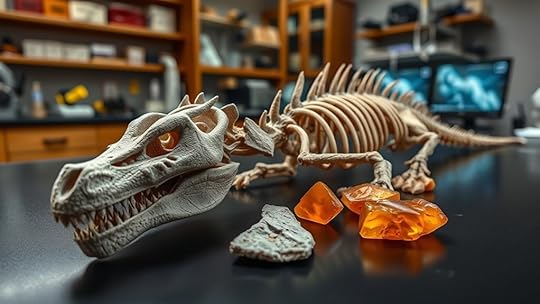
By examining reconstructed skeletons, you can gain valuable insights into joint mechanics that reveal how ancient creatures moved. Analyzing muscle attachment points helps you understand their behavior and capabilities. Together, these details bring fossilized animals back to life in a way that tells their story of movement.
Joint Mechanics InsightsReconstructed skeletons from 3-D printed fossil fragments allow scientists to analyze joint mechanics in ways that were previously impossible. By examining joint articulation, you can see how bones fit and move together, revealing potential ranges of motion. This insight helps determine how a dragon might have moved or perched. Ligament dynamics become clearer as you study how soft tissues would have supported joint stability, guiding your understanding of flexibility and strength. With precise models, you can simulate movement, testing different poses and behaviors. These analyses shed light on the creature’s agility and interaction with its environment, providing a detailed picture of its biomechanics. Ultimately, understanding joint mechanics through 3-D printed fossils offers a fresh perspective on how these ancient beings moved and behaved.
Muscle Attachment AnalysisHave you ever wondered how scientists determine muscle placement on fossilized bones? They use biomechanical modeling combined with detailed muscle attachment analysis to infer how muscles connected and functioned. By examining the texture, scars, and ridges on bones, you can identify probable attachment sites. This process helps reconstruct movement and behavior accurately.
Bone FeatureFunctionSignificanceRugose ridgesMuscle attachmentIndicates strong, active musclesScar patternsMuscle insertion pointsReveal muscle size and directionTuberositiesJoint leverageAssist in movement analysisThis table highlights how specific features guide muscle placement, allowing for precise biomechanical models to simulate dragon locomotion and behavior based on fossil evidence.
Implications for Understanding Prehistoric Ecosystems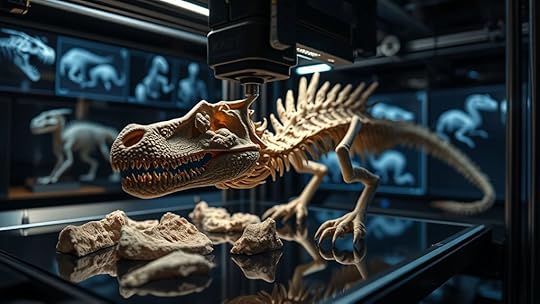
The ability to 3-D print fossil fragments considerably enhances our understanding of prehistoric ecosystems by providing detailed, accessible models of ancient organisms and their environments. With accurate fossil dating, you can establish precise timelines for species interactions and environmental changes. These models enable thorough paleoenvironment analysis, helping you visualize habitat conditions and climate factors that shaped ecosystems. By examining reconstructed structures, you gain insights into predator-prey relationships, dietary habits, and ecological niches. This approach allows you to explore how different species coexisted and evolved over time, revealing ecosystem dynamics often hidden in fragmented fossils. Ultimately, 3-D printing deepens your comprehension of ancient biodiversity and environmental shifts, offering a clearer picture of how prehistoric worlds functioned and adapted.
Future Developments in 3-D Printing for Extinct Species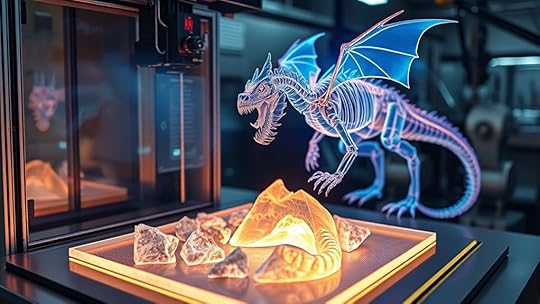
Advancements in 3-D printing technology are poised to revolutionize how you study extinct species, enabling more accurate and detailed reconstructions than ever before. Future developments may integrate genetic engineering, allowing you to recreate biological features at a molecular level, enhancing realism in fossil replicas. This progress could lead to dynamic models that move or even exhibit behaviors, deepening your understanding of ancient creatures. Additionally, as mythical symbolism often influences modern interpretations, future 3-D printing could incorporate cultural narratives, blending science with legend. You might see fossils transformed into vivid, lifelike representations, bridging scientific accuracy with mythic storytelling. These innovations promise to expand your ability to explore and visualize extinct species, making your research more immersive and impactful.
Ethical and Scientific Considerations in Recreating Legendary Creatures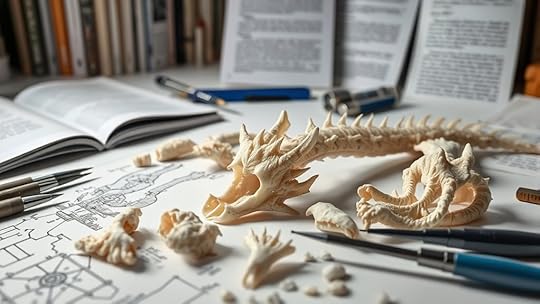
Recreating legendary creatures through 3-D printing raises important ethical and scientific questions that you must consider carefully. Ethical dilemmas include respecting cultural significance, avoiding misinformation, and guaranteeing responsible use of technology. Scientific accuracy is vital to maintain credibility and avoid misleading interpretations of fossil evidence. You should also evaluate the potential impact on scientific integrity and public perception. Addressing these concerns helps prevent the misuse of 3-D printing for sensationalism or deception. Balancing innovation with responsibility ensures that recreations serve educational and research purposes ethically. Ultimately, your approach must prioritize transparency, authenticity, and respect for both scientific methods and cultural sensitivities. Carefully steering these considerations helps uphold the integrity of reconstructing legendary creatures responsibly.
Frequently Asked QuestionsHow Accurate Are 3-D Printed Dragon Models Compared to Original Fossils?You might wonder about fossil accuracy when comparing 3-D printed models to original fossils. The modeling precision depends on the quality of the scans and the data used; high-resolution scans can produce very accurate replicas. While 3-D printed dragons may not capture every tiny detail, they generally offer excellent fidelity for study and visualization. Overall, they serve as reliable tools, though some minor discrepancies can exist compared to the original fossils.
Can 3-D Printing Help Identify Soft Tissue Structures in Dragons?You can use 3D printing to assist with soft tissue visualization in dragons by applying advanced anatomical reconstruction techniques. While fossils primarily reveal bones, 3D printing helps create models that integrate soft tissue details inferred from related species and imaging data. This approach allows you to better understand the dragon’s anatomy, making soft tissue identification more accurate and providing a clearer picture of how these creatures might have looked and functioned.
What Software Tools Are Used for Designing Dragon Anatomy Models?Imagine a dragon’s form coming to life on your screen. You use digital sculpting software like ZBrush or Blender to craft detailed models, blending creativity with precision. These tools enable anatomical visualization, allowing you to design intricate muscle structures and skeletal frameworks. They help you visualize complex physiology, making your models more realistic. With this software, you transform your ideas into detailed, accurate representations of dragon anatomy for study or display.
How Do 3-D Printed Models Influence Public Understanding of Prehistoric Creatures?When you explore 3-D printed models of prehistoric creatures, you enhance educational engagement and help debunk myths. These tangible replicas make ancient life more accessible, allowing you to see details that photos or text can’t provide. As a result, you gain a clearer understanding of these creatures’ true physiology, fostering curiosity and critical thinking. 3-D printing therefore plays an essential role in making prehistoric science engaging and accurate for the public.
Are There Limitations to Recreating Coloration and Texture in 3-D Printed Fossils?Imagine capturing the vibrant hues of a living creature, yet facing limitations in color fidelity and texture replication. You find that recreating accurate coloration and surface details remains challenging, as 3-D printing often struggles with nuanced shades and intricate textures. While it offers remarkable structural insights, the technology’s constraints mean you may not achieve perfectly lifelike fossils, leaving some visual and tactile qualities absent or simplified in the final reproduction.
ConclusionBy diving into 3-D printing of dragon fossils, you’re revealing the secrets of creatures long thought mythical, bringing ancient legends to life with jaw-dropping detail. Imagine walking through a prehistoric world where dragons once soared, all thanks to cutting-edge tech. As you explore these reconstructions, you’ll realize you’re on the brink of a scientific revolution that could rewrite history itself—making the impossible undeniably real.



